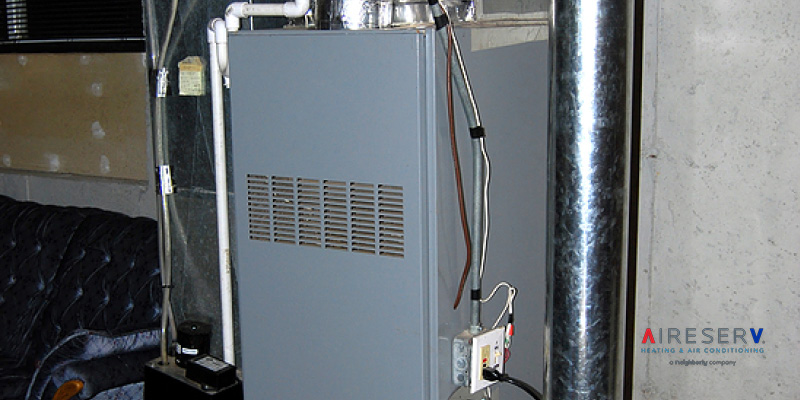
Buying a new furnace is a big investment. However, it also offers big opportunities for savings. Which furnace is right for your home and family, and how much does a furnace cost? Furnaces come in a wide variety of shapes, sizes, efficiency, and subsequently, price ranges. Let’s take a closer look…
How Much is a Furnace Based on Fuel-Type?
Furnaces can be powered by natural gas, propane, oil or electricity. Cost, availability and usage will guide what energy source is used. These numbers represent average homes with average needs:
- Gas
- Average Furnace Cost: $1,200
- Installation: $2,300
- Benefits: Gas furnaces are the most commonly used furnace type due to their higher heating efficiency and the affordability of fuel. They are quieter and cleaner than oil furnaces and require minimal maintenance.
- Drawbacks: Gas furnaces provide less heat per BTU than oil. Gas and oil (combustion) furnaces also come with carbon monoxide concerns.
- Oil
- Average Furnace Cost: $2,000
- Installation: $6,000
- Benefits: Oil furnaces are common in older homes in the northeast region, providing more heat per BTU than gas and electric heat sources
- Drawbacks: A storage tank is required and oil must be delivered with this furnace style. Despite providing more heat per BTU, efficiency is lower on these systems, and fuel prices higher. There is also a bit more regular maintenance – chimney cleaning, oil filter changes, etc. due to dirt and soot buildup. Like other combustion systems, these also come with carbon monoxide concerns.
- Electric
- Average Furnace Cost: $700
- Installation: $2,000
- Benefits: A good alternative if natural gas is not available, electric furnaces have no need for a flue, which reduces heat loss. They typically have an AFUE rating of 95-100%.
- Drawbacks: Electricity necessary to power electric furnaces tends to be more expensive than fossil fuels used for combustion-style furnaces. If you prefer to rely on electricity for your fuel source, a heat pump may be a better alternative, though these may not be your most reliable heat source in colder regions.
Considering Switching Furnace Styles?
If you're considering upgrading to a different style of furnace than the one you currently have, keep in mind there may be additional costs involved in setup and installation, such as added gas lines, electrical upgrades, oil storage and other associated costs.
What About Operational Expenses?
Based on average household usage and expected weather, supply and demand, the Massachusetts Department of Energy and Resources predicted these fuel estimates for 2017-2018 heating season:
- Natural Gas: $846
- Heating Oil: $2,278
- Propane: $2,248
- Electric: $738
- NOTE: These prices may vary drastically depending on the availability of fuel sources in your area. Geo-specific research is recommended.*
Is a Higher AFUE Rating Worth It?
The efficiency rating for your heating system, rated by AFUE (Annual Fuel Utilization Efficiency), determines how much it will cost you to heat your home. Higher numbers mean greater efficiency for the amount of energy used. How much can you save annually be purchasing a more efficient furnace compared to a less efficient model? This varies greatly by location: High-efficiency models have a far greater payoff in Vermont, where winters are bitterly cold and the difference between indoor/outdoor temperatures is vast, than in Florida, where heating is only used for minor temperature differences a few days per year. As your home’s largest energy expense, in certain regions, the amount saved by more efficient models can be a pretty penny. This is doubly-true for older furnaces, such as 70s-90s gas models, which have a rating of around 65% efficiency. (The minimum for today’s furnaces is 80% – with the most efficient, Energy Star models reaching efficiencies as high as 97%!) For improved efficiency, also look to systems with 2-stage or modulating/variable heat introduction (versus full-blast only operation).
Want a More Concrete Number?
Look to furnace efficiency calculators, or consider this simple math:
- 80% efficiency = 20cents on the dollar spent on heating goes up in smoke.
- 95% efficiency = 5cents on the dollar goes up in smoke.
Furnace Replacement Savings
Contact your local Aire Serv® professional to learn more about available manufacturer rebates, as well as state and local tax and energy efficiency incentives for your area. Your utility company may offer “green” rebates and incentives too.
Confused about which furnace style might be best for your home or budget? The experts at Aire Serv® are happy to help break it down for you. Contact us today.

